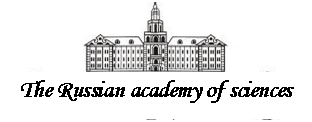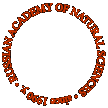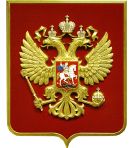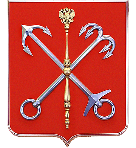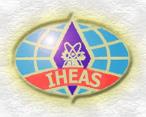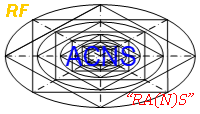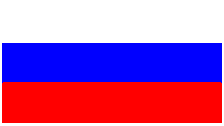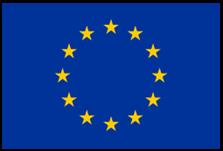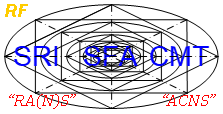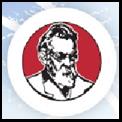

|
“The IVth international action [from the 01st of January 2015 y. to the 31st of December 2015 y.] |
|
|
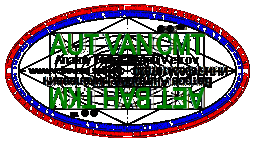
|
It is carried out according to the letter from the 27th of December 2011 y. №A26-13-808834 and the 27th of February 2013 y. №I-17399 |
|
|
|
Dear citizens of The Russian Federation and the foreign countries!
We invite You to take part in “The IVth international action
The table of contents of the print manuscript (the scientific monography)
I. The table of contents of the print manuscript (the textbook and scientific monography) The list of definitions 6 The list of reductions and symbols 7 The introduction 5 1. The condition of the problem of creation of the adaptive intellectual environments of training 6 1.1. The relevance of creation of the adaptive intellectual means and environments of automated training 7 1.2. The analysis of the condition of problem and the existing contradictions 8 1.3. The degree of readiness of the problem of creation of the adaptive intellectual technologies and means of training 12 1.4. The purpose and the tasks of creation of the adaptive information-educational environment 15 1.5. The stages of creation and the analysis of the environment of automated training based on the cognitive models 17 1.6. The list of received scientific results 23 2. The analysis of information technologies and the theoretical bases of creation 27 2.1. The modern standards in the area of quality of the information-educational environment 28 2.2. The priority aspects and the directions of informatization 30 2.3. The basic principles of automated training 31 2.4. The stages of development of the automated means and environments of training 34 2.5. The features of organization of the information-educational environment 35 2.5.1. The distinctive features of the information-educational environment 38 2.5.2. The subjects of the information-educational environment of the automated training 45 2.5.3. Components, means and technologies in the basis of the information-educational environment 49 2.5.4. The models and the technologies of organization of interaction of the subjects and the automated means of training 56 2.6. The comparative characteristic of opportunities of the automated training systems 57 2.7. The main parameters of estimation of the modern means of training 58 2.8. The features of information interaction of the subjects and means of training 63 2.9. The factors influencing on the efficiency of the formation of knowledge of trainees 67 2.10. The influence of components of the automated training system on the health of consumers 68 3. The environment of automated training with the properties of adaptation based on the cognitive models 71 3.1. The essence of approach to the complex solution of the problem and the statement of research tasks 72 3.2. The modifications in the organization of the information-educational environment 74 3.3. The modifications in the technology of automated training 75 3.4. The structure of the environment of automated training with the properties of adaptation 76 3.4.1. The appointment and functions of the adaptive electronic textbook 78 3.4.2. The appointment and functions of the basic diagnostic module 81 3.4.3. The appointment and functions of the applied diagnostic module 83 3.4.4. The appointment and structure of the parametrical cognitive models block 84 3.5. The processing and extraction of information, the structuring of data and the representation of knowledge 85 3.5.1. The classification of the sources of information 89 3.5.2. The knowledge acquisition methods on subject area 91 3.5.3. The main models of the representation of knowledge 94 3.5.4. The information structure of the electronic textbook 95 3.5.5. The sequence of filling of the content of the electronic textbook by the structured information 97 3.5.6. The features of architecture of the adaptive electronic textbook 100 3.5.7. The semantic model of representation, saving and extraction of information 102 3.6. The formal description of the adaptive information-educational environment on the basis of the theory of control 105 3.6.1. The kinds of algorithms of functioning of the main components of the automated training system 108 3.6.2. The features of realization of adaptation in the automated educational environment 113 3.6.3. The specifics of the algorithm of training with the model of a trainee 118 3.6.4. The estimation of parameters of the (cognitive) model 122 4. The cognitive modeling technology for the system analysis of the information-educational environment 127 4.1. The iterative cycle of the cognitive modeling technology 128 4.2. The technique of use of the cognitive modeling technology 130 4.3. The ways of representation of the structure of cognitive model 133 4.4. The algorithm of formation of the structure of the cognitive model 135 4.5. The technique of research of the parameters of the cognitive model of the subject of training 142 4.6. The technique of research of the parameters of the cognitive model of the means of training 144 4.7. The algorithm of processing of a posteriori data of testing 147 5. The parametrical cognitive models block for the analysis and the increasing in the efficiency of functioning 151 5.1. The structure of the cognitive model of the subject of training 156 5.2. The structure of the cognitive model of the means of training 165 6. The complex of the software for the automation of research tasks 170 6.1. The complex of programs for the automation of the tasks of research 172 6.2. The adaptive electronic textbook 175 6.3. The basic diagnostic module 185 6.4. The applied diagnostic module 191 7. The statistical justification (substantiation) of the practical use of the received results 203 7.1. The factors influencing on the efficiency of the formation of knowledge of a trainee 205 7.2. The features of organization and the plan of carrying out of the experiment 207 7.3. The features of research of the parameters of the physiological portrait 210 7.4. The features of research of the parameters of the psychological portrait 218 7.5. The features of research of the parameters of the linguistic portrait 230 7.6. The specifics of preliminary processing of a posteriori results of the diagnostics 237 7.7. The features of choice of the methods of the statistical analysis of the created selections 239 7.8. The analysis of the dynamics of resultativity of training for the several years 240 7.9. The results of the regression analysis 245 7.10. The results of the discriminant analysis 247 The conclusion 249 The bibliographic list 251
II. The table of contents of my hand-made manuscripts The table of contents of the lectures 1. “Theory of control” (part 1) The normative links The list of definitions The list of reductions and symbols The introduction 1. The basic concepts of the theory of control. 1.1. The concepts about the control and control systems. 1.2. The behavior of the objects and control systems. 1.3. The information and principles of control. 1.3.1. The opened control. 1.3.2. The compensation of indignations. 1.3.3. The control systems with feedback. 1.3.4. The adaptive control systems. 1.4. The classification of control systems by the type of signal. 1.5. The classification of control systems by the power sign. 1.6. The mathematical models of control systems. 1.7. The models of environment of the process of control. 1.8. The ways of modeling. 1.8.1. The analytical way. 1.8.2. The experimental way. 2. The theory of the linear continuous control systems. 2.1. The models of the control systems “entrance-exit”. 2.1.1. The differential equation. 2.1.2. The transfer function. 2.1.3. The time characteristic. 2.1.4. The frequency characteristic. 2.2. The building of time characteristics. 2.3. The building of frequency characteristics. 2.4. The models of the control systems “entrance-state-exit”. 2.5. The building of the models of the control systems “entrance-exit” 2.6. The models of control systems. 2.6.1. The structural schemes. 2.6.2. The alarm graphs. 2.7. The characteristics of typical connections. 2.7.1. The consecutive connection. 2.7.2. The parallel connection. 2.7.3. The connection with feedback. 2.8. The characteristics of the systems with any structure. 2.9. The formula of Mezon and the rule of Kramer. 2.10. The building of the models of the control systems with the opened structure 2.10.1. The transition from the transfer functions (of the differential equations) 2.10.2. The indicators of the heterogeneity of choice of the variables of condition. 3.2.2. The criterion of Gurvits. 3.2.3. The criterion of Mikhaylov. 3.3. The stability of the control systems with the typical structure. 3.3.1. The consecutive and parallel connection of links. 3.3.2. The connection of links with feedback. 3.4. The criterion of Nyquist. 3.5. The invariancy of control systems. 3.6. The invariancy in the control systems with the typical structure. 3.6.1. The consecutive connection. 3.6.2. The parallel connection. 3.6.3. The control system with feedback.
The table of contents of the lectures 2. “Theory of control” (part 2) 3.7. The sensitivity of control systems. 3.8. The sensitivity of the control systems with the typical structure. 3.8.1. The sensitivity of the control system, formed by the consecutive connection of links. 3.8.2. The sensitivity of the control system, formed by the parallel connection of links. 3.8.3. The sensitivity of the control system with feedback. 3.9. The sensitivity of the control system with any structure. 3.10. The analysis of quality of the processes of control. 3.10.1. The root indicators of quality. 3.10.2. The integrated indicators of quality. 3.10.3. The frequency indicators of quality. 3.11. The analysis of quality of the compelled movements of control systems. 4. The nonlinear models of control systems. 4.1. The definition of nonlinear model. 4.2. The features of behavior of the nonlinear control system. 4.2.1. The self-oscillations. 4.2.2. The limitation of levels of the processes of control. 4.2.3. The final duration of the established control processes. 4.2.4. The limitlessness of reaction on the final interval of time. 4.2.5. The dependence of character of the process of control 4.2.6. The preservation of form and frequency of fluctuations of the process of control. 4.2.7. The polyharmonic, subharmonic, almost periodic fluctuations 4.2.8. The spasmodic resonance.
The table of contents of the lectures 3. “Theory of control” (part 3) 5. The synthesis of control systems. 5.1. The purposes of synthesis of the control systems. 5.2. The possible statements of the tasks of synthesis of the control systems. 5.2.1. The synthesis of the control influences. 5.2.2. The synthesis of the compensators of indignations. 5.2.3. The synthesis of control systems from the condition of suppression of the directly not measured influences. 5.2.4. The watching control systems. 5.2.5. The synthesis of regulators for the unstable objects of control. 5.2.6. The package of settings of the typical regulators. 5.3. The nonlinear links and their characteristics. 5.3.1. The statistical characteristics. 5.3.2. The dynamic nonlinearity. 5.3.3. The existence of self-oscillations. 5.3.4. The nonlinear elements of control with the piecewise-constant characteristics. 5.3.5. The nonlinear elements of control with the piecewise-straight-line characteristics. 5.3.6. The nonlinear elements of control with the smooth statistical characteristics. 5.4. The artificial neural networks as the multidimensional nonlinear elements of control. 5.4.1. The use of neural networks in the quality of the units of control. 5.4.2. The representation of the nonlinear model of the control system 5.4.3. The representation of the nonlinear model of the control system in the form of the structural scheme and graph. 5.5. The synthesis of the control systems invariant to the influences. 5.5.1. The synthesis of the static control systems. 5.5.2. The synthesis of the astatic control systems by the accuracy of suppression of degree influences. 5.6. The synthesis by the requirements to the accuracy of suppression of the harmonious indignations. 6. The analysis of the nonlinear control systems. 6.1. The general task of the analysis of the nonlinear control systems. 6.2. The methods of the analysis of the nonlinear control systems. 7. The analysis of equilibrium modes. 7.1. The nonlinear models of the control systems in the form of the structural scheme. 7.2. The methods of linearization of the nonlinear characteristics by the tangents (by tangent). 7.3. The possibility of application of the methods of the linear theory. 7.4. Some examples of linearization of the nonlinear control systems. 7.5. The method of phase plane. 7.6. The ways of building of the phase portraits. 7.7. The calculation of transfer function of the link of correction. 7.8. The stabilization of the unstable objects of control. 7.9. The stabilization of pendulum in the top position of balance.
The table of contents of the lectures 4. “The local control systems” The normative links The list of definitions The list of reductions and symbols The introduction 1. The local theory of control. 1.1. The local control systems. 1.1.1. The basic concepts and definitions of the local theory of control. 1.1.2. The local control. 1.1.3. The local regulation. 1.1.4. The local managerial-control. 1.1.5. The local function of communication with the environment. 1.1.6. The local function of emergency protection, alarm-system and display of information. 1.2. The classes of the local control systems. 1.2.1. The functional scheme of the system of industrial automatics, 1.2.2. The functional scheme of the adjustable or automatic electric-drive. 1.2.3. The functional scheme of the watching system. 2. The principles of building of the local control systems and regulation. 2.1. The equivalent representation of the objects of regulation and control. 2.1.1. The one-dimensional linear object of control. 2.1.2. The multidimensional linear object of control. 2.2. The regulation by the deviation. 2.3. The regulation by the indignation. 2.3.1. The indignation changes in time. 2.3.2. The indignation is not measured in time. 2.4. The combined regulation. 2.4.1. The indignation changes in time. 2.4.2. The indignation is not measured in time. 2.4.3. The systems of stabilization and regulation at the not measured indignations on the object of control. 2.4.4. The task of stabilization at the nonzero indignations. 2.5. The compensation of parametrical indignations. 2.6. The synthesis of the local systems of regulation in the conditions of stochastic indignations 2.7. The regulation of the objects of control with delay. 2.7.1. The one-contour systems of regulation of the object of control with delay. 2.7.2. The object of control with delay is included 2.7.3. The one-contour control system with the purpose of calculation of the parameters of regulator 2.8. The local systems of regulation with the use of the principle of the variability of structure. 2.8.1. The basic concepts and the principles of the variability of structure. 2.8.2. The principles of the variability of structure in the phase plane 2.9. The practical applicability of the filter of Winer. 2.10. The control systems by the multidimensional multicoherent objects of control. 2.10.1. The linear objects of control described by the system of the linear differential equations. 2.10.2. The check of control systems by the multicoherent objects of control. 2.10.3. The equations of condition of the multicoherent control systems. 2.10.4. The equations of condition of the multidimensional multicoherent control systems. 2.10.5. The scheme of the equations of condition of the multicoherent control system (general case). 2.11. The autonomy of the multicoherent linear control systems. 2.11.1. The first principle of autonomy. 2.11.2. The second principle of autonomy. 3. The industrial systems of regulation. 3.1. The general details and definitions. 3.2. The typical laws of regulation. 3.2.1. The P (proportional)-algorithm (law) of regulation (control). 3.2.2. The I (integrated)-algorithm (law) of regulation (control). 3.2.3. The D (differential)-algorithm (law) of regulation (control). 3.2.4. The PI-algorithm (law) of regulation (control). 3.2.5. The PD-algorithm (law) of regulation (control). 3.2.6. The PID-algorithm (law) of regulation (control). 3.2.7. The modified PID-algorithms (laws) of regulation (control). 3.3. The criteria of calculation of the parameters of settings of the industrial regulators with the main algorithms. 3.3.1. The direct criteria of local control. 3.3.2. The local reregulation. 3.3.3. The degree of attenuation. 3.3.4. The indirect criteria. 3.3.5. The frequency indicators of quality. 3.3.6. The degree of variability. 3.3.7. The criterion of optimality of the module of frequency characteristics (the criterion of modular optimum). 3.3.8. The integrated estimations of quality. 3.4. The typical functional schemes of the industrial automatic control systems 3.4.1. The one-contour control systems with the typical regulators 3.4.2. The systems of precision regulation with the high resolution capability. 3.4.3. The systems of cascade regulation (the systems of subordinated regulation). 3.4.4. The systems of regulation of the ratio of stabilized sizes.
The table of contents of the lectures 5. “The optimal control systems” The normative links The list of definitions The list of reductions and symbols The introduction 1. The mathematical description of the optimal objects and control systems. 2. The decision of the linear stationary system of differential equations. 2.1. The analytical representation of the optimal control system. 2.2. The matrix and vector transfer function. 3. The controllability of the linear stationary optimal control system. 3.1. The optimal control system with the diagonal matrix. 4. The controllability at the similar transformation of coordinates. 4.1. The special case of scalar control. 5. The property of normality of the object of control. 6. The property of stabilizability of the linear stationary control system. 6.1. The private case of object in the canonical controlled form. 7. The condition of observability of the linear stationary control system. 7.1. The calculation of the matrix of observability (Kallman R.). 7.2. The optimal control systems with the diagonal matrix (in the canonical observed form). 7.3. The property of detectability. 8. The principle of maximum. 8.1. The preliminary details. 8.2. The formulation of the principle of maximum. 8.3. The private case of the principle of maximum. 8.4. The scheme of application of the principle of maximum. 9. The conditions of transversality. 9.1. The ways of the search of transversality. 9.1.1. Through the tangent vector. 9.1.2. Through the vector of gradient to the surface. 10. The solution of task for the criterion of Bolts and Mayer. 10.1. The systems optimal by the speed. 10.2. The similar transformation as in the condition of normality. 10.3. The main case – the nondegenerate control. 11. The interfaced system and its properties. 12. The instability of optimal control systems. 12.1. The condition of degeneracy in the control systems. 13. The theorem about the n intervals. 14. The theorem of Roll’. 14.1. The theorem is fair for the object of control with the valid roots. 14.2. The method of joining. 15. The definition of the moments of switching on the basis of the principle of maximum. 16. The method of Noyshtadt. 16.1. The private case with the transition to the beginning of coordinates. 17. The control systems optimal by the speed with the linear function of switching. 17.1. The function of switching for the private case of interchangeable switching. 17.2. The features of behavior of the optimal control system with the linear function of switching. 18. The control systems optimal by the speed with the nonlinear function of switching. 19. The synthesis of the systems of the IInd degree for the object of control in the view of two integrators. 20. The features of realization of the optimal control system with the nonlinear function of switching. 21. The synthesis of the optimal control system of the IIIrd degree, optimum by the speed. 22. The use of the method of return movement. 23. The approximate definition of the equation of the surface of switching by the means of “return movement”. 24. The control systems optimal by the speed with the taking into account of external influences.
The table of contents of the lectures 6. “The indistinct control systems” The normative links The list of definitions The list of reductions and symbols The introduction 1. The task of modeling of the set level in the tank. 2. The main differences in the cycle of design of the classical control systems 3. The bases of the theory of indistinct sets. 3.1. The indistinct addition. 3.2. The indistinct crossing. 3.3. The criterion of minimum. 3.4. The criterion of maximum. 3.5. The algebraic multiplication. 3.6. The limited difference. 3.7. The multiplication of Einstein. 3.8. The multiplication of Hamakher. 3.9. The indistinct association. 3.10. The algebraic sum. 3.11. The limited sum. 3.12. The sum of Einstein. 3.13. The sum of Hamakher. 3.14. The ratio between operations. 3.15. The modifiers of indistinct sets. 3.16. The operator of concentration CON. 3.17. The operator of dilyation DIL. 3.18. The operator of contrast (intensity) INT. 3.19. The indistinct relations. 3.20. The first consequence. 3.21. The second consequence. 3.22. The third consequence. 3.23. The modeling of the concept “tall young man”. 4. The ways of formation of the relational matrixes. 4.1. The expert forms. 4.2. The calculation of simpler indistinct one-dimensional relations. 5. The crossing, association and composition of the indistinct relations. 5.1. The crossing of the indistinct relations. 5.2. The association of the indistinct relations. 5.3. The composition (multifaction) of the indistinct relations. 6. The indistinct logical operators. 6.1. The table of validity. 6.2. The algebraic formula. 6.3. The use of graphic ways. 6.4. The use of the criteria of minimum and maximum. 6.5. The properties of T-norms. 6.6. The properties of S-norms. 6.7. The communication between T and S norms. 7. The linguistic rules. 8. The indistinct logical conclusions. 8.1. The method of the center of gravity. 9. The typical structures of the indistinct control systems at the absence or existence of requirements 9.1. The scheme of indirect adaptation. 9.2. The scheme of direct adaptation. 9.3. The scheme of the self-organizing controller on the basis of model. 10. The synthesis of indistinct regulators. 10.1. The generalized procedure of design. 11. The typical indistinct regulators. 11.1. The indistinct element with the characteristic type “relay”. 11.2. The indistinct element with the characteristic type “amplifier with saturation”. 11.3. The indistinct element with the characteristic type “hysteresis”. 12. The indistinct PID-regulators. 12.1. The P-regulator. 12.2. The I-regulator. 12.3. The D-regulator. 12.4. The PI-regulator. 12.5. The PD-regulator. 12.6. The PID-regulator. 12.7. The comparison of the accurate and indistinct PID-regulator. 12.8. The indistinct regulator with the sliding mode of switching. 12.9. The sliding mode. 12.10. The idea of transition to the indistinct law. 12.11. The features of realization of the indistinct regulators. 13. The combined indistinct control systems. 13.1. The indistinct block of task. 13.2. The scheme of preliminary filtration (“forfiltr”). 13.3. The use of the indistinct controller for the correction of control influence. 13.4. The scheme of preliminary control (“forcontrol”). 13.5. The indistinct control of switchings. 13.6. The scheme of indirect adaptation. 13.7. The scheme of direct adaptation. 14. The Neuro-Fuzzy-systems. 14.1. The adaptability. 14.2. The associativity. 14.3. The cycle of design. 14.4. The properties of neurons and the way of organization. 14.5. The classification of Neuro-Fuzzy-systems. 14.6. The most popular classes of networks. 15. The analysis of sensitivity of the indistinct control systems. 15.1. The method of convex decomposition. 15.2. The method of vector field.
The table of contents of the lectures 7. “The adaptive control in the technical systems” The normative links The list of definitions The list of reductions and symbols The introduction 1. The tasks and methods of synthesis of the systems of adaptive control. 1.1. The mathematical models of the objects of control. 1.2. The purpose of adaptive control. 1.3. The main approaches to the realization of adaptive control. 1.4. The tasks of adaptive control. 1.5. The adaptive approach to the realization of control. 1.6. The principles of adaptation. 1.7. The systems with the “passive” adaptation. 1.8. The systems with the adaptive control of the linear objects of control. 1.9. The analytical self-adjusted control systems. 1.10. The analytical adaptive systems with the reference model. 1.11. The analytical adaptive systems with the not adjusted reference model. 1.12. The self-algorithmized control systems. 1.13. The self-organizing control systems. 1.14. The adaptive control systems with the recurrent computing algorithms. 1.15. The self-oscillatory self-adjusted systems. 1.16. The adaptive control systems of identification type. 1.17. The adaptive control systems of direct action (with the adaptive forecast) (with anticipation). 1.18. The adaptive control systems with the adaptive optimizer. 1.19. The formal definition of the task of synthesis of the adaptive control systems. 2. The computing algorithms in the adaptive control systems. 2.1. The determined algorithms (computing). 2.2. The stochastic algorithms (computing). 2.3. The general characteristic of computing algorithms. 2.4. The general structure of computing algorithms in the tasks of adaptive control. 2.5. To the question of stability of the computing algorithms. 2.6. The one-contour continuous system and the block of formation of gradient. 2.7. The algorithm of speed gradient (descent). 2.8. The algorithm of statistical approximation. 2.9. The method of functions of Lyapunov in the adaptive systems. 2.10. The lemma of Barbalat (the proof of the theorem of Lyapunov). 2.11. The conditions of asymptotic stability. 2.12. The algorithm of the direct adaptive control and asymptotic identification. 2.13. The sigmoidal functions. 2.14. The application of the second direct method of Lyapunov. 2.15. The direct adaptive control. 2.16. The adaptive control systems with the implicit reference model.
The table of contents of the lectures 8. “The discrete control systems” The normative links The list of definitions The list of reductions and symbols The introduction 1. The discrete control systems. 1.1. The concept of a priori and working (current) information. 1.2. The quantization by the time. 1.3. The quantization by the level. 1.4. The quantization by the time and level. 1.5. The structural schemes of the discrete control systems. 2. The models of the discrete control systems. 2.1. The representation of the real impulse element. 2.2. The representation of the ideal impulse element. 3. The trellised and displaced trellised function. 3.1. The differential equations. 3.2. The mathematical model of the ideal impulse element. 3.3. The modified z-transformations of discrete functions (transcendence). 4. The main properties of z-transformations. 4.1. The linearity of z-transformations. 4.2. The resulting value of integrated signal. 4.3. The shift in the area of time. 4.4. The shift in the complex area. 4.5. The function of impulse transfer of the discrete control system. 4.6. The examples of definition of the impulse transfer function of the elementary control systems. 4.7. The main properties of the impulse transfer function. 4.8. The structural schemes of the impulse systems. 4.9. The consecutive connection of links (communications or knots). 4.10. The parallel connection of links (communications or knots). 4.11. The mixed connection of links (communications or knots). 4.12. The mathematical description of the ideal impulse element in the frequency area. 4.13. The frequency characteristics of the impulse signals. 4.14. The theorem of Kalmykov-Shannon. 4.15. The frequency characteristics of the impulse systems. 4.16. The ways of calculation of the frequency characteristics. 4.17. The ways of creation of the frequency characteristics. 4.18. The transformation of representation of the impulse signals. 4.19. The communication between the representations of impulse signals. 4.20. The quantization by the time of measurement of the logarithmic amplitude-frequency characteristic 4.21. The approximate technique of creation of the logarithmic frequency characteristic 5. The representation of the discrete control systems in the variables of condition. 6. The analysis of the discrete control systems. 6.1. The analysis of stability of the discrete control systems. 6.2. The criterion of Mikhaylov for the discrete systems. 6.3. The analysis of processes of the discrete control systems. 6.4. The set of variables and the equations of condition of the discrete control systems. 6.5. The theorem of resulting value of z-transformation. 6.6. The definition of processes in the control systems according to the theorem of deductions (references). 6.7. The definition of processes in the control systems on the equation of condition of the control system. 6.8. The transition from the equations of conditions to the transfer functions. 7. The synthesis of the systems of control by the discrete objects. 7.1. The definition of the form of operator of the transfer functions. |
